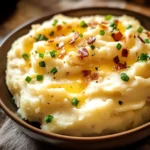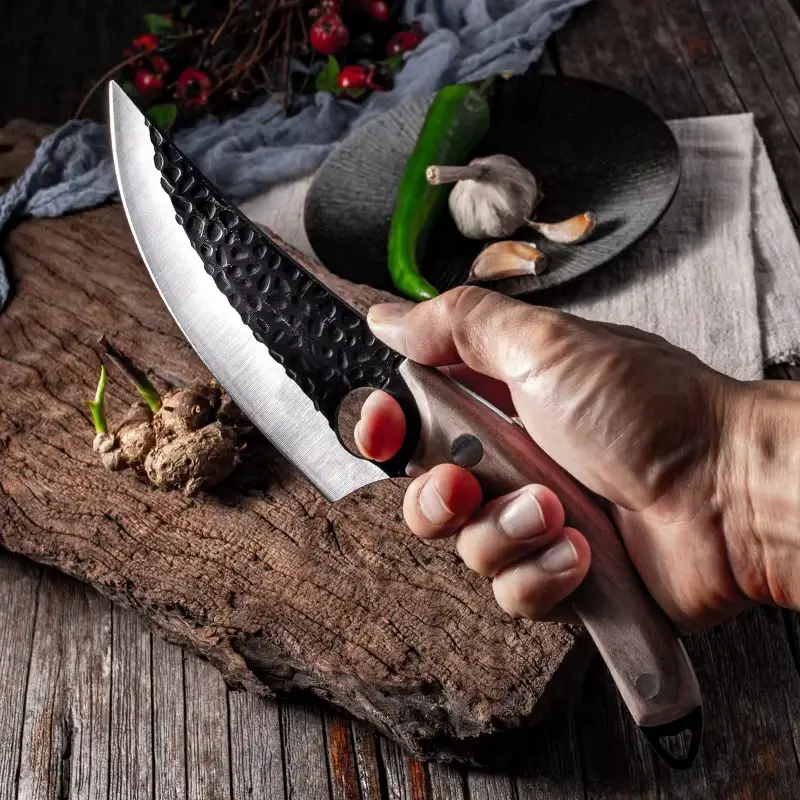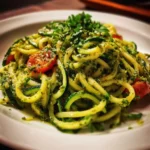It’s a dish that whispers ‘comfort’ with every creamy, buttery bite. In our family, the Buttery Mashed Potato Casserole has become synonymous with cozy evenings and holiday feasts. There’s something undeniably magical about transforming humble potatoes into a rich, decadent casserole that everyone, from the pickiest eaters to the most discerning palates, devours with gusto. This recipe isn’t just about mashed potatoes; it’s about elevating them to a whole new level of deliciousness, creating a side dish that often steals the show. The aroma alone, as it bakes in the oven, fills the kitchen with warmth and anticipation. And the taste? Oh, the taste is pure bliss – fluffy, buttery potatoes, infused with savory notes and a hint of creamy richness that melts in your mouth. Trust me, once you try this Buttery Mashed Potato Casserole, it will become a cherished staple in your own kitchen, a guaranteed crowd-pleaser for any occasion.
Ingredients for the Ultimate Buttery Mashed Potato Casserole
This recipe focuses on fresh, high-quality ingredients to create the most flavorful and comforting mashed potato casserole. Here’s what you’ll need:
- Potatoes (3 lbs): Choose Yukon Gold or Russet potatoes. Yukon Golds offer a naturally buttery and creamy texture, while Russets become wonderfully fluffy when mashed.
- Butter (1 cup, unsalted): Real butter is essential for that signature buttery flavor and rich texture. Unsalted allows you to control the saltiness of the dish.
- Whole Milk (1 cup): Whole milk adds creaminess and richness. You can substitute with half-and-half or heavy cream for an even more decadent casserole.
- Sour Cream (1 cup): Sour cream introduces a delightful tang and extra creaminess, balancing the richness of the butter and milk. Full-fat sour cream is recommended for the best texture.
- Cream Cheese (4 oz, softened): Softened cream cheese melts beautifully into the mashed potatoes, adding a subtle cheesy flavor and even more creaminess.
- Garlic (2 cloves, minced): Fresh garlic provides a savory depth of flavor that complements the potatoes and dairy beautifully.
- Onion Powder (1 teaspoon): Onion powder enhances the savory notes and adds a subtle aromatic complexity.
- Salt (to taste): Salt is crucial for bringing out the flavors of all the ingredients. Start with a teaspoon and adjust to your preference.
- Black Pepper (freshly ground, to taste): Freshly ground black pepper adds a touch of spice and enhances the overall flavor profile.
- Fresh Chives (2 tablespoons, chopped, for garnish): Fresh chives provide a pop of color and a mild oniony flavor for garnish. Parsley or green onions are also great alternatives.
Step-by-Step Instructions for Making Buttery Mashed Potato Casserole
Follow these detailed instructions to create a perfect Buttery Mashed Potato Casserole every time:
- Prepare the Potatoes: Begin by thoroughly washing and scrubbing the potatoes. Whether you choose Yukon Gold or Russet, ensure they are clean of any dirt or debris. Peeling the potatoes is optional; leaving the skins on will result in a more rustic and nutritious casserole, adding fiber and a slightly different texture. If you prefer a smoother, classic mashed potato texture, peel the potatoes before proceeding. Once washed and peeled (if desired), cut the potatoes into uniform 1-2 inch chunks. This ensures even cooking. Smaller pieces cook faster and more evenly than larger chunks.
- Boil the Potatoes: Place the cut potatoes in a large pot and cover them with cold water. The water should be about an inch above the potatoes. Adding cold water allows the potatoes to cook evenly from the inside out. Season the water generously with salt. Salting the water not only seasons the potatoes from within but also helps them cook faster and more evenly. Bring the water to a rolling boil over high heat. Once boiling, reduce the heat to medium and let the potatoes simmer gently until they are fork-tender. This usually takes about 15-20 minutes, depending on the size of the potato chunks and type of potato. You’ll know they are ready when a fork easily pierces through the center of a potato piece without resistance.
- Drain the Potatoes: Once the potatoes are fork-tender, carefully drain them in a colander. It’s crucial to drain them thoroughly to remove excess water. Excess water can lead to watery mashed potatoes, which we want to avoid. Return the drained potatoes to the empty pot. Putting them back in the warm pot helps to steam off any remaining moisture, contributing to fluffier mashed potatoes.
- Mash the Potatoes: Now it’s time to mash the potatoes. You can use a potato ricer, a potato masher, or even an electric hand mixer for this step. A ricer will produce the smoothest, most lump-free mashed potatoes. A potato masher will give you a slightly chunkier, more rustic texture, which some people prefer. If using an electric mixer, be careful not to overmix, as this can lead to gluey mashed potatoes. Mash the potatoes until they reach your desired consistency.
- Melt the Butter: While the potatoes are still warm, add the butter to the pot with the mashed potatoes. The residual heat from the potatoes will help melt the butter beautifully. Allow the butter to melt completely, stirring it into the potatoes as it melts. The melted butter infuses the potatoes with rich flavor and creates a smooth, luxurious texture.
- Warm the Milk and Cream Cheese: In a separate saucepan or microwave-safe bowl, warm the whole milk until it is heated through but not boiling. Warming the milk prevents it from cooling down the mashed potatoes and helps it incorporate smoothly. Add the softened cream cheese to the warm milk. The warmth of the milk helps the softened cream cheese melt easily. Stir continuously until the cream cheese is completely melted and the mixture is smooth and creamy. This warm milk and cream cheese mixture is the key to the casserole’s ultimate creaminess.
- Combine Wet Ingredients with Potatoes: Pour the warm milk and cream cheese mixture into the pot with the mashed potatoes and melted butter. Stir gently to combine all the ingredients. Be careful not to overmix at this stage; gentle stirring is sufficient to incorporate the wet ingredients without making the potatoes gluey.
- Add Flavor Enhancers: Add the minced garlic, onion powder, salt, and freshly ground black pepper to the potato mixture. Stir again to evenly distribute the seasonings. Taste the mashed potatoes at this point and adjust the seasonings to your liking. You may want to add more salt, pepper, or even a pinch of garlic powder or dried herbs like thyme or rosemary, depending on your taste preferences.
- Preheat Oven and Prepare Casserole Dish: Preheat your oven to 375°F (190°C). While the oven is preheating, lightly grease a 9×13 inch casserole dish. Greasing the dish prevents the casserole from sticking and makes serving easier. You can use butter, cooking spray, or olive oil to grease the dish.
- Assemble the Casserole: Transfer the mashed potato mixture into the prepared casserole dish, spreading it evenly across the bottom. You can create a smooth, even surface or leave it slightly textured for a more rustic look.
- Bake the Casserole: Place the casserole dish in the preheated oven and bake for 20-25 minutes, or until the top is lightly golden brown and the casserole is heated through. Baking time may vary slightly depending on your oven. The goal is to heat the casserole thoroughly and lightly brown the top. If you want a more golden brown top, you can broil it for the last 1-2 minutes, but watch it closely to prevent burning.
- Garnish and Serve: Once baked, remove the Buttery Mashed Potato Casserole from the oven and let it rest for a few minutes before serving. This allows the casserole to set slightly and makes it easier to serve. Garnish generously with fresh chopped chives or your herb of choice. The fresh herbs add a final touch of flavor and visual appeal. Serve hot and enjoy the creamy, buttery goodness of your homemade mashed potato casserole!
Nutrition Facts for Buttery Mashed Potato Casserole (per serving)
- Servings: 8
- Calories: Approximately 350-400 kcal
- Fat: 25-30g
- Saturated Fat: 15-20g
- Cholesterol: 70-90mg
Note: Nutritional values are estimates and can vary based on specific ingredients used and serving size.
Preparation Time for Buttery Mashed Potato Casserole
This delicious Buttery Mashed Potato Casserole is surprisingly easy to make, perfect for busy weeknights or special occasions.
- Prep Time: 20 minutes (This includes washing, peeling and chopping potatoes, mincing garlic, and measuring ingredients).
- Cook Time: 40 minutes (20 minutes for boiling potatoes, 20-25 minutes for baking casserole).
- Total Time: Approximately 1 hour
How to Serve Buttery Mashed Potato Casserole
This versatile and comforting casserole is a perfect side dish for a wide variety of meals. Here are some delightful ways to serve it:
- Alongside Main Courses:
- Roasted Vegetables: The creamy richness of the casserole pairs beautifully with the sweetness of roasted vegetables like broccoli, carrots, Brussels sprouts, or asparagus.
- Vegetarian Loaf: Serve with a hearty vegetarian loaf made from lentils, mushrooms, or nuts for a complete and satisfying vegetarian meal.
- Grilled Portobello Mushrooms: The earthy flavors of grilled portobello mushrooms are enhanced by the creamy texture of the casserole.
- Eggplant Parmesan (Vegetarian Version): A classic vegetarian dish that’s wonderfully complemented by the comforting mashed potatoes.
- Lentil Shepherd’s Pie (Vegetarian): Pair with a vegetarian shepherd’s pie for a cozy and comforting meal, replacing the potato topping with this buttery casserole for a twist.
- Holiday and Special Occasions:
- Thanksgiving or Christmas Dinner: A must-have side dish for holiday feasts, adding a touch of indulgence to the festive table.
- Easter Brunch or Dinner: A creamy and comforting addition to Easter celebrations.
- Potlucks and Gatherings: Easy to transport and always a crowd-pleaser at potlucks, family gatherings, and dinner parties.
- Toppings and Garnishes:
- Fresh Herbs: Chopped chives, parsley, or thyme add freshness and a pop of color.
- Shredded Cheese: A sprinkle of cheddar, Gruyère, or Parmesan cheese on top before baking or after baking and broiling adds extra cheesy flavor.
- Breadcrumbs: Buttered breadcrumbs provide a delightful crunchy topping.
- Caramelized Onions: Sweet and savory caramelized onions offer a flavorful and textural contrast.
- Crispy Fried Onions: For a classic casserole topping crunch and flavor.
Additional Tips for the Best Buttery Mashed Potato Casserole
Elevate your Buttery Mashed Potato Casserole to perfection with these helpful tips:
- Choose the Right Potatoes: For the creamiest mashed potatoes, opt for Yukon Gold or Russet potatoes. Yukon Golds are naturally buttery and creamy, while Russets become wonderfully fluffy when mashed. Avoid waxy potatoes like red potatoes, as they don’t mash as well.
- Don’t Overwork the Potatoes: Overmixing mashed potatoes, especially with an electric mixer, can release too much starch and result in a gluey texture. Mash them gently until just smooth and combined.
- Warm Your Dairy: Warming the milk and cream cheese before adding them to the mashed potatoes is crucial. Cold dairy can cool down the potatoes and make them less fluffy. Warm dairy incorporates smoothly and helps maintain the ideal temperature.
- Season Generously: Don’t be shy with salt and pepper! Seasoning at each stage – in the boiling water and in the mashed potatoes – is key to flavorful mashed potatoes. Taste and adjust seasonings as needed.
- Add Flavor Boosters: Beyond garlic and onion powder, consider adding other flavor enhancers. Roasted garlic, caramelized onions, fresh herbs like rosemary or thyme, or a pinch of nutmeg can add depth and complexity to your casserole.
- Make it Ahead of Time: This casserole is perfect for making ahead. Prepare the mashed potatoes completely, assemble the casserole, cover it tightly with plastic wrap, and refrigerate for up to 2 days. Bake as directed, adding about 10-15 minutes to the baking time to ensure it’s heated through.
- Customize Your Topping: Get creative with your toppings! Experiment with different cheeses, breadcrumbs, herbs, or even crispy fried onions to add flavor and texture. A sprinkle of smoked paprika or chili flakes can add a subtle kick.
- Reheat Properly: To reheat leftover casserole, cover it with foil and bake at 350°F (175°C) until heated through, about 20-30 minutes. You can also reheat individual portions in the microwave, but the texture may be slightly different. Add a splash of milk or cream if needed to restore moisture.
Frequently Asked Questions (FAQ) About Buttery Mashed Potato Casserole
Here are some common questions and answers to help you make the best Buttery Mashed Potato Casserole:
Q1: Can I make this casserole vegetarian and vegan?
A1: Yes! This recipe is already vegetarian. To make it vegan, substitute the butter with a high-quality vegan butter alternative, use unsweetened plant-based milk (like oat or soy milk), and replace the sour cream and cream cheese with vegan sour cream and vegan cream cheese alternatives. Ensure your vegan substitutes are designed for cooking and baking for the best results.
Q2: Can I use different types of cheese in this casserole?
A2: Absolutely! While cream cheese adds a lovely subtle tang and creaminess, you can experiment with other cheeses. Shredded cheddar, Gruyère, Monterey Jack, or Parmesan cheese can be added to the mashed potato mixture or sprinkled on top before baking for extra cheesy flavor. Consider a blend of cheeses for a more complex flavor profile.
Q3: Can I add bacon or meat to this recipe?
A3: While this specific recipe is designed to be a vegetarian Buttery Mashed Potato Casserole, you can certainly add cooked and crumbled bacon, ham, or shredded cooked chicken or beef if you prefer a meat version. Add cooked meat to the mashed potato mixture before baking or sprinkle bacon on top as a garnish after baking. However, remember to adjust the recipe title and description if you include meat.
Q4: Can I make this casserole ahead of time and freeze it?
A4: While mashed potatoes can sometimes change texture when frozen, this casserole can be made ahead and frozen with some considerations. Assemble the casserole, let it cool completely, then wrap it tightly in plastic wrap and then foil. Freeze for up to 2-3 months. To bake from frozen, thaw overnight in the refrigerator or bake directly from frozen at 350°F (175°C), covered with foil, for about 1-1.5 hours, or until heated through. Baking time may vary.
Q5: What if my mashed potatoes are too thick?
A5: If your mashed potatoes are too thick, gradually add a little more warm milk or cream until you reach your desired consistency. Add liquid slowly and stir until incorporated to avoid making them too thin. You can also add a tablespoon of melted butter for extra richness and smoothness.
Q6: What if my mashed potatoes are too watery?
A6: If your mashed potatoes are too watery, there are a few things you can do. You can try simmering them in a pot over low heat, uncovered, stirring frequently to allow excess moisture to evaporate. Alternatively, you can mix in a tablespoon or two of instant potato flakes or cornstarch to help absorb the excess liquid.
Q7: Can I use garlic powder instead of fresh garlic?
A7: Yes, you can use garlic powder if you don’t have fresh garlic on hand. Use about ½ to 1 teaspoon of garlic powder as a substitute for 2 cloves of fresh garlic. However, fresh garlic provides a more robust and aromatic flavor. For the best flavor, fresh garlic is recommended, but garlic powder is a convenient alternative.
Q8: How long will leftovers last in the refrigerator?
A8: Leftover Buttery Mashed Potato Casserole can be stored in an airtight container in the refrigerator for 3-4 days. Reheat thoroughly before serving. It’s best to consume leftovers within this timeframe for optimal quality and food safety.

Buttery Mashed Potato Casserole
Ingredients
This recipe focuses on fresh, high-quality ingredients to create the most flavorful and comforting mashed potato casserole. Here’s what you’ll need:
- Potatoes (3 lbs): Choose Yukon Gold or Russet potatoes. Yukon Golds offer a naturally buttery and creamy texture, while Russets become wonderfully fluffy when mashed.
- Butter (1 cup, unsalted): Real butter is essential for that signature buttery flavor and rich texture. Unsalted allows you to control the saltiness of the dish.
- Whole Milk (1 cup): Whole milk adds creaminess and richness. You can substitute with half-and-half or heavy cream for an even more decadent casserole.
- Sour Cream (1 cup): Sour cream introduces a delightful tang and extra creaminess, balancing the richness of the butter and milk. Full-fat sour cream is recommended for the best texture.
- Cream Cheese (4 oz, softened): Softened cream cheese melts beautifully into the mashed potatoes, adding a subtle cheesy flavor and even more creaminess.
- Garlic (2 cloves, minced): Fresh garlic provides a savory depth of flavor that complements the potatoes and dairy beautifully.
- Onion Powder (1 teaspoon): Onion powder enhances the savory notes and adds a subtle aromatic complexity.
- Salt (to taste): Salt is crucial for bringing out the flavors of all the ingredients. Start with a teaspoon and adjust to your preference.
- Black Pepper (freshly ground, to taste): Freshly ground black pepper adds a touch of spice and enhances the overall flavor profile.
- Fresh Chives (2 tablespoons, chopped, for garnish): Fresh chives provide a pop of color and a mild oniony flavor for garnish. Parsley or green onions are also great alternatives.
Instructions
Follow these detailed instructions to create a perfect Buttery Mashed Potato Casserole every time:
- Prepare the Potatoes: Begin by thoroughly washing and scrubbing the potatoes. Whether you choose Yukon Gold or Russet, ensure they are clean of any dirt or debris. Peeling the potatoes is optional; leaving the skins on will result in a more rustic and nutritious casserole, adding fiber and a slightly different texture. If you prefer a smoother, classic mashed potato texture, peel the potatoes before proceeding. Once washed and peeled (if desired), cut the potatoes into uniform 1-2 inch chunks. This ensures even cooking. Smaller pieces cook faster and more evenly than larger chunks.
- Boil the Potatoes: Place the cut potatoes in a large pot and cover them with cold water. The water should be about an inch above the potatoes. Adding cold water allows the potatoes to cook evenly from the inside out. Season the water generously with salt. Salting the water not only seasons the potatoes from within but also helps them cook faster and more evenly. Bring the water to a rolling boil over high heat. Once boiling, reduce the heat to medium and let the potatoes simmer gently until they are fork-tender. This usually takes about 15-20 minutes, depending on the size of the potato chunks and type of potato. You’ll know they are ready when a fork easily pierces through the center of a potato piece without resistance.
- Drain the Potatoes: Once the potatoes are fork-tender, carefully drain them in a colander. It’s crucial to drain them thoroughly to remove excess water. Excess water can lead to watery mashed potatoes, which we want to avoid. Return the drained potatoes to the empty pot. Putting them back in the warm pot helps to steam off any remaining moisture, contributing to fluffier mashed potatoes.
- Mash the Potatoes: Now it’s time to mash the potatoes. You can use a potato ricer, a potato masher, or even an electric hand mixer for this step. A ricer will produce the smoothest, most lump-free mashed potatoes. A potato masher will give you a slightly chunkier, more rustic texture, which some people prefer. If using an electric mixer, be careful not to overmix, as this can lead to gluey mashed potatoes. Mash the potatoes until they reach your desired consistency.
- Melt the Butter: While the potatoes are still warm, add the butter to the pot with the mashed potatoes. The residual heat from the potatoes will help melt the butter beautifully. Allow the butter to melt completely, stirring it into the potatoes as it melts. The melted butter infuses the potatoes with rich flavor and creates a smooth, luxurious texture.
- Warm the Milk and Cream Cheese: In a separate saucepan or microwave-safe bowl, warm the whole milk until it is heated through but not boiling. Warming the milk prevents it from cooling down the mashed potatoes and helps it incorporate smoothly. Add the softened cream cheese to the warm milk. The warmth of the milk helps the softened cream cheese melt easily. Stir continuously until the cream cheese is completely melted and the mixture is smooth and creamy. This warm milk and cream cheese mixture is the key to the casserole’s ultimate creaminess.
- Combine Wet Ingredients with Potatoes: Pour the warm milk and cream cheese mixture into the pot with the mashed potatoes and melted butter. Stir gently to combine all the ingredients. Be careful not to overmix at this stage; gentle stirring is sufficient to incorporate the wet ingredients without making the potatoes gluey.
- Add Flavor Enhancers: Add the minced garlic, onion powder, salt, and freshly ground black pepper to the potato mixture. Stir again to evenly distribute the seasonings. Taste the mashed potatoes at this point and adjust the seasonings to your liking. You may want to add more salt, pepper, or even a pinch of garlic powder or dried herbs like thyme or rosemary, depending on your taste preferences.
- Preheat Oven and Prepare Casserole Dish: Preheat your oven to 375°F (190°C). While the oven is preheating, lightly grease a 9×13 inch casserole dish. Greasing the dish prevents the casserole from sticking and makes serving easier. You can use butter, cooking spray, or olive oil to grease the dish.
- Assemble the Casserole: Transfer the mashed potato mixture into the prepared casserole dish, spreading it evenly across the bottom. You can create a smooth, even surface or leave it slightly textured for a more rustic look.
- Bake the Casserole: Place the casserole dish in the preheated oven and bake for 20-25 minutes, or until the top is lightly golden brown and the casserole is heated through. Baking time may vary slightly depending on your oven. The goal is to heat the casserole thoroughly and lightly brown the top. If you want a more golden brown top, you can broil it for the last 1-2 minutes, but watch it closely to prevent burning.
- Garnish and Serve: Once baked, remove the Buttery Mashed Potato Casserole from the oven and let it rest for a few minutes before serving. This allows the casserole to set slightly and makes it easier to serve. Garnish generously with fresh chopped chives or your herb of choice. The fresh herbs add a final touch of flavor and visual appeal. Serve hot and enjoy the creamy, buttery goodness of your homemade mashed potato casserole!
Nutrition
- Serving Size: one normal portion
- Calories: 400
- Fat: 30g
- Saturated Fat: 20g
- Cholesterol: 90mg






